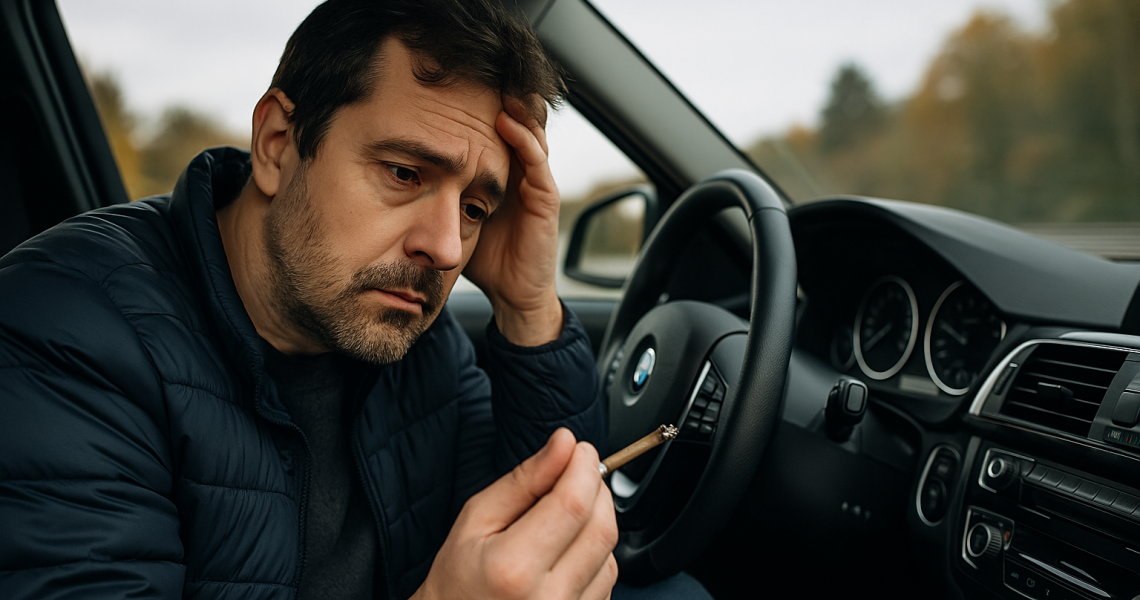I remember the feeling of invulnerability I had when I was young, behind the wheel. A joint now and then? “It relaxes me, I won’t be driving long”. Drinking and driving has long been stigmatized, but cannabis? That one seemed lighter, less “dangerous”. Then I read the recently published study, and everything changed.
What the study reveals
The study, conducted in Maryland County, USA, shows that around 41.9% of drivers who died in accidents had active THC in their blood. Why Docteur+1
In other words: almost one in two drivers in this context had consumed cannabis shortly before the accident.
In France, saliva tests carried out on school buses between January and August 2025 also reveal a disturbing reality: out of more than 30,000 screenings, 119 drivers tested positive for a narcotic (including cannabis first), compared with 63 for alcohol.
| Read also: You want to start a booming business in the health sector. Mylasertabac offers turnkey training. |

Why we were still downplaying the danger
I see three main reasons for this.
- Cannabis is often perceived as “less serious” than alcohol. Yet research shows that cannabis affects alertness, prolongs reaction time and impairs coordination – all essential elements for driving.
- Some consumers think they drive “cool”, without feeling any effect. The study underlines that tolerance exists, but that it masks the danger at the cost of weakened reflexes.
- Until now, prevention messages have been much stronger for alcohol than for drugs. This late alignment explains a persistent lack of awareness.
What I remember as a parent, as a citizen
As a parent, I realize how urgent this issue is: a young person who smokes a joint before driving doesn’t necessarily see himself as “under the influence”. And yet.
On the road, every second counts. The study reminds us that even a slight alteration can be enough to tip us over the edge. La Tribune Auto+1
For me, this means: we talk about these subjects with my children. We talk about reality; we don’t let time and unconsciousness take over.
Good information also means understanding
The effects of cannabis at the wheel go beyond the simple “state of inebriation”. Slowed reflex speed, impaired concentration, misjudgment of distances… All these dimensions are confirmed.
One thing the study highlights is that it’s not just how much you smoke, but when you drive after smoking. Even occasional users can have an effect lasting several hours.
What we can do today
- It’s time to approach this subject with sincerity: not as a “you mustn’t” but as a “you know why I say that”.
- Introduce clear benchmarks: driving implies that I am fully capable; any substance that weakens this capacity is incompatible with driving.
- Promote the alternative: for those who consume, it’s better to choose a time without driving, plan a return trip without a vehicle, or postpone driving for several hours.
- As a structure, educator or parent, convey a message that includes cannabis in the same way we talk about alcohol: it’s not just about legality, it’s about safety.
Changing our perception
This study has convinced me that cannabis cannot be treated separately: it is a real risk factor for driving.
I can choose to use it, but I have to understand that driving afterwards is a dangerous game.
Society must also take on board this message: tighter controls, explicit campaigns, exchanges with young people.
To conclude
Talking about cannabis behind the wheel isn’t about scaring people: it’s about making them think.
A second’s inattention, a slowed reflex, can cost a life.
And that life… it’s worth more than the moment.
If I’ve learned one thing, it’s that the freedom to drive safely deserves vigilance.
And that open, sincere dialogue can change behavior.
